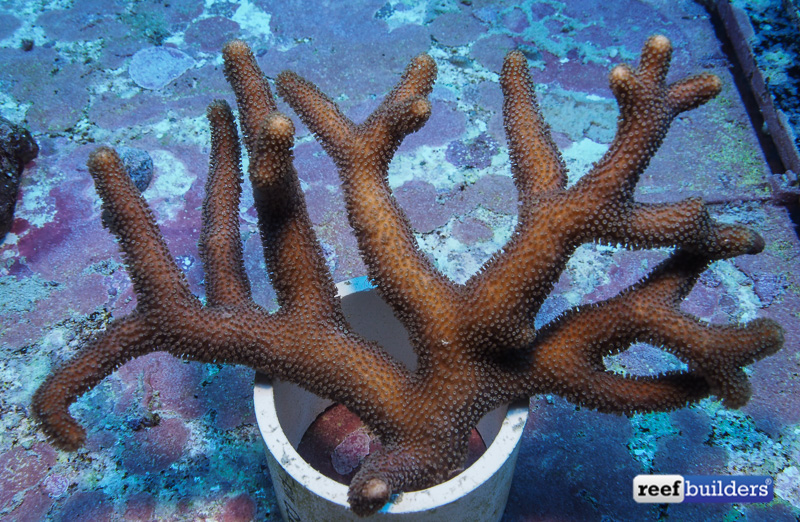Palauastrea ramosa is one of those bizzar-o corals that we’ve always wondered about from seeing it in books, and which has never truly enjoyed any kind of exposure in the reef aquarium scene. Thankfully, a few recent trips to the Coral Triangle helped to bring us face to face (or polyps to face mask) with this very peculiar small polyp stony coral.


With no real world appearances in the marine aquarium hobby, aquarium books don’t discuss or even mention Palauastrea ramosa, the only species in this oddball genus. Palauastrea has gone back and forth between the Pocilloporidae and Astrocoeniidae but as far as aquarists are concerned, it is enough to say that Palauastrea is closely related to Madracis, Stylocoeniella, Pocillopora, Seriatopora and Stylophora.
At a distance, Palauastrea colonies look nearly identical to Porites cylindrica. However, when viewed up close, the beige to light brown branches of P. ramosa look distinct, with much more exert and fleshy polyps that make this coral look like a cross between Porites and Stylophora.

Another interesting note about Palauastrea is that it has en exceptionally solid and dense skeleton. While collecting a specimen in the Solomon Islands, we went to snap off a branch like we would for a Porites or an Acro, but it really took a hammer and chisel and a few strikes to separate it a single branch from the main colony.
Despite being an actually rare coral, on the reef and in aquariums, the ‘basic’ appearance of Palauastrea is not going to win it any popularity contests. P. ramosa is really a coral for the connoisseurs who want to try to grow something unique and different, but since we have very limited experience with this genus and species, there’s no telling how fast we’ll be able to grow it, and how well it will be able to spread in the coral reef hobby.
Seeing this coral in person and bringing a couple pieces back to the U.S. to grow in an aquarium was a real treat, and we hope to bring more attention to this and other unknown coral species in the future.





